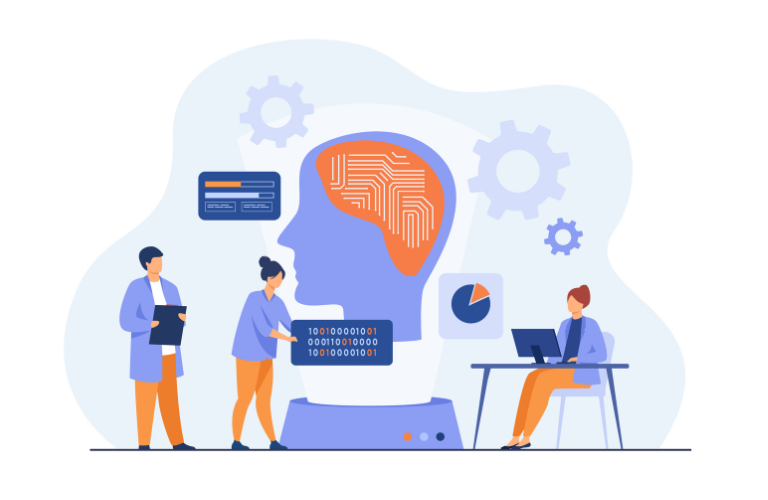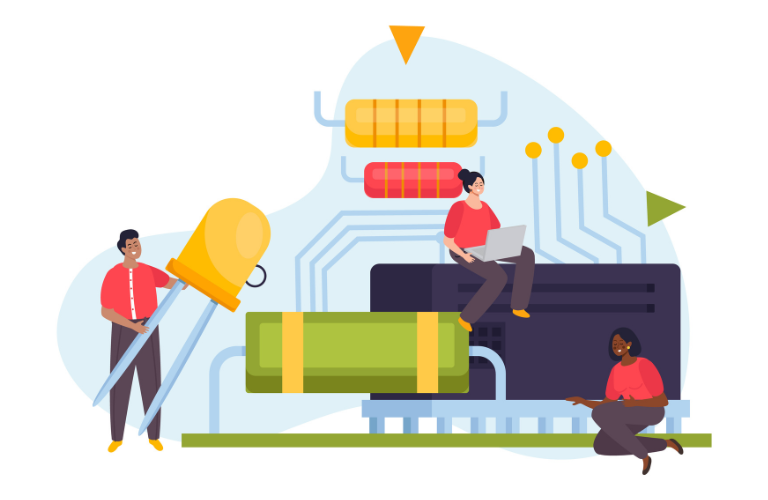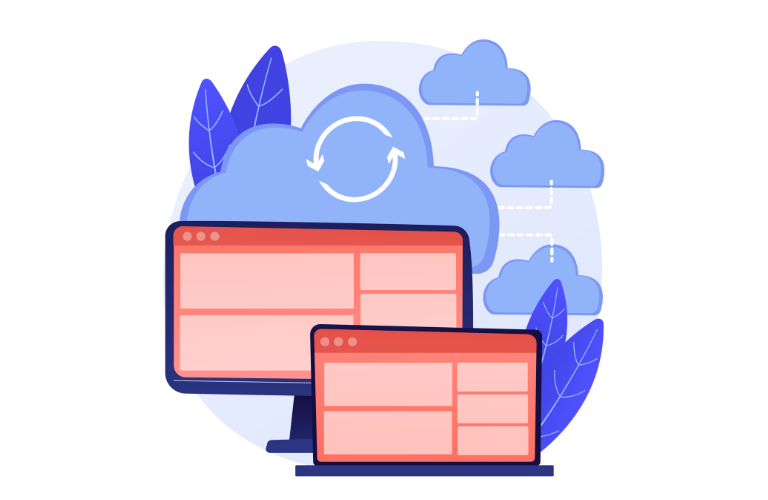Transfer Learning with LLMs is a game-changer for developers aiming to build powerful AI models quickly and efficiently. By leveraging pre-trained large language models (LLMs), developers can bypass the resource-intensive process of training models from scratch. This technique uses existing knowledge from models like BERT or GPT to adapt to new tasks, saving time and computational resources.
Whether you’re a developer tackling natural language processing (NLP) or a business optimizing workflows, this article explores how Transfer Learning with LLMs accelerates model development, offering actionable steps, real-world use cases, and time-saving shortcuts.
Table of Contents
What is Transfer Learning with LLMs?
Transfer Learning with LLMs involves using a pre-trained model, trained on vast datasets, and adapting it for specific tasks. These models, such as BERT, GPT-3, or T5, are trained on diverse text corpora, enabling them to understand language patterns, syntax, and semantics.
Instead of starting from zero, developers fine-tune these models for tasks like sentiment analysis or chatbots, making development faster and more efficient.
The process reduces the need for large labeled datasets, which are often costly and time-consuming to create. By building on a model’s existing knowledge, developers can achieve high accuracy with minimal data, addressing pain points like slow training times and resource constraints.
Why Use Transfer Learning with LLMs?
Developers face challenges like limited data, high computational costs, and lengthy training periods. Transfer Learning with LLMs tackles these issues head-on. Here’s why it’s a go-to approach:
- Overcomes Data Scarcity: Pre-trained models work with small datasets, reducing overfitting risks compared to training from scratch.
- Saves Time: Training a model from scratch can take weeks. Transfer learning cuts this down to hours or days.
- Reduces Costs: By leveraging pre-trained weights, developers need less computational power, lowering hardware expenses.
- Boosts Accuracy: Pre-trained models capture general language features, improving performance on specialized tasks.
- Enhances Flexibility: Models can adapt to various domains, from healthcare to marketing, with minimal tweaks.
For example, a developer building a chatbot can use a pre-trained GPT model and fine-tune it with customer service data, achieving human-like responses faster than building a new model.
How Transfer Learning with LLMs Works
The process of Transfer Learning with LLMs is straightforward yet powerful, involving three key stages: selecting a pre-trained model, adapting it to a new task, and fine-tuning for optimal performance.
Step 1: Select a Pre-trained Model
Choose a model suited to your task. For NLP tasks, popular choices include:
- BERT: Ideal for understanding context in tasks like sentiment analysis.
- GPT-3: Great for text generation and conversational applications.
- T5: Versatile for text-to-text tasks like translation or summarization.
Ensure the model aligns with your task’s domain. For instance, BERT’s bidirectional context makes it perfect for classification tasks, while GPT-3 excels in generative tasks.
Step 2: Adapt the Model
Once you’ve selected a model, adapt it to your task. This involves freezing most of the model’s layers to preserve learned features like syntax or semantics. Add new layers tailored to your task, such as a classification layer for sentiment analysis. These layers are trained on your dataset, bridging the gap between general knowledge and task-specific needs.
Step 3: Fine-Tune the Model
Fine-tuning refines the model’s performance. Unfreeze some layers and train them with a low learning rate to avoid overfitting. Use task-specific data to adjust weights, ensuring the model aligns with your goals.
For example, fine-tuning BERT on customer reviews can improve its ability to detect sentiment nuances.
Practical Implementation: Transfer Learning with LLMs
Here’s a simple implementation using Python and TensorFlow Hub for a sentiment analysis task. This example assumes basic Python knowledge and a small dataset of customer reviews.
import tensorflow as tf
import tensorflow_hub as hub
import tensorflow_text as text
import numpy as np
# Load pre-trained BERT model from TensorFlow Hub
model_url = "https://tfhub.dev/tensorflow/bert_en_uncased_L-12_H-768_A-12/4"
bert_model = hub.KerasLayer(model_url, trainable=True)
# Sample dataset (replace with your own)
reviews = ["Great product, highly recommend!", "Terrible service, very disappointed."]
labels = [1, 0] # 1 for positive, 0 for negative
# Preprocess text (tokenization handled by BERT)
def preprocess_text(texts):
preprocessor = hub.KerasLayer("https://tfhub.dev/tensorflow/bert_en_uncased_preprocess/3")
return preprocessor(texts)
# Build model
inputs = tf.keras.Input(shape=(), dtype=tf.string)
preprocessed = preprocess_text(inputs)
outputs = bert_model(preprocessed)
dense = tf.keras.layers.Dense(1, activation='sigmoid')(outputs['pooled_output'])
model = tf.keras.Model(inputs=inputs, outputs=outputs)
# Compile and fine-tune
model.compile(optimizer=tf.keras.optimizers.Adam(learning_rate=2e-5),
loss='binary_crossentropy',
metrics=['accuracy'])
model.fit(reviews, np.array(labels), epochs=3, batch_size=8)
# Predict
predictions = model.predict(["Amazing experience!"])
print("Sentiment:", "Positive" if predictions[0] > 0.5 else "Negative")This code loads a pre-trained BERT model, adds a dense layer for binary classification, and fine-tunes it on a small dataset. The low learning rate (2e-5) ensures subtle adjustments, preventing overfitting.
Time-Saving Shortcuts
To accelerate development with Transfer Learning with LLMs, consider these shortcuts:
- Use Pre-trained Models from Hugging Face: The Hugging Face Transformers library offers ready-to-use models like BERT and GPT.
- Leverage Cloud Platforms: Services like Google Colab or AWS SageMaker provide GPU access.
- Automate Hyperparameter Tuning: Tools like Optuna or Keras Tuner help optimize training parameters.
- Start with Small Datasets: Fine-tune using a small, high-quality dataset before scaling.
Real-World Use Cases
Transfer Learning with LLMs powers diverse applications across industries. Here are some impactful examples:
- Customer Sentiment Analysis: Analyze reviews or social posts to tailor marketing strategies.
- Chatbots: Use GPT-3 to create responsive, human-like assistants.
- Healthcare: Analyze patient records to aid in disease detection.
- Content Generation: Generate brand-aligned content using models like T5.
- Code Generation: Use CodeBERT to assist in code writing and debugging.
Pros and Cons of Transfer Learning with LLMs
Pros:
- Faster training compared to building models from scratch
- High accuracy with small datasets
- Cost-effective due to lower computational needs
Cons:
- Risk of overfitting with small/noisy datasets
- Potential bias transfer from original training data
- Requires expertise for proper fine-tuning
Mitigation: Use curated datasets and monitor fine-tuning metrics.
Best Practices for Success
- Choose the Right Model: Align model type with your task goals.
- Curate Quality Data: Ensure relevance and reduce bias.
- Monitor Metrics: Use appropriate metrics like F1-score or BLEU.
- Iterate Gradually: Freeze layers first, then unfreeze selectively.
- Stay Updated: Follow platforms like Hugging Face and TensorFlow.
Future Prospects
The future of Transfer Learning with LLMs is promising. According to Grand View Research, the machine learning market is expected to grow at a 34.8% CAGR from 2023 to 2030.
Emerging advancements include:
- Adaptive architectures
- Meta-learning
- Integration with IoT, blockchain, and cloud platforms
Caution: Ethical concerns like bias and privacy must be actively addressed.
Getting Started as a Developer
If you’re new to Transfer Learning with LLMs:
- Learn the Basics: Start with ML and NLP tutorials.
- Experiment: Use Hugging Face and TensorFlow for hands-on projects.
- Build a Portfolio: Projects like sentiment analyzers or chatbots help.
- Join Communities: Engage on Reddit, GitHub, and Kaggle.
Conclusion
Transfer Learning with LLMs empowers developers to build efficient, accurate models without the burden of extensive data or resources. By leveraging pre-trained models, adapting them to specific tasks, and fine-tuning for optimal performance, developers can address real-world challenges like slow training and limited datasets.
With practical implementations, time-saving shortcuts, and diverse use cases, this technique is transforming AI development. Start exploring Transfer Learning with LLMs today to accelerate your projects and stay ahead in the fast-evolving world of machine learning.
FAQs
1. What is Transfer Learning with LLMs?
Transfer Learning with LLMs involves using a pre-trained large language model, like BERT or GPT, and adapting it for specific tasks such as sentiment analysis or chatbots. It leverages existing knowledge to save time and improve accuracy with minimal data.
2. Why should I use Transfer Learning with LLMs?
It saves time, reduces computational costs, and boosts model accuracy. By using pre-trained models, developers can build effective solutions even with small datasets, making it ideal for tasks like text generation or customer sentiment analysis.
3. How does Transfer Learning with LLMs work?
It starts by selecting a pre-trained model, freezing most of its layers to retain learned features, and adding new layers for your task. Fine-tuning adjusts the model with task-specific data, ensuring high performance with less training time.
4. What are some real-world uses of Transfer Learning with LLMs?
Common applications include creating chatbots, analyzing customer sentiment, generating marketing content, assisting in healthcare diagnostics, and automating code writing. It’s widely used in industries like marketing, healthcare, and education.
5. What are the benefits of Transfer Learning with LLMs?
Key benefits include faster training, lower costs, and better accuracy. It allows developers to adapt models to new tasks without needing extensive data or resources, making it efficient and flexible.
6. Can Transfer Learning with LLMs fail?
Yes, it can fail if the source and target tasks are too different or if the dataset is noisy. Overfitting or bias transfer from pre-trained data can also reduce effectiveness, so careful model selection and data curation are crucial.
7. How can beginners start with Transfer Learning with LLMs?
Beginners can start by learning NLP basics through platforms like Coursera. Experiment with libraries like Hugging Face’s Transformers, try fine-tuning pre-trained models, and build small projects like sentiment classifiers.




